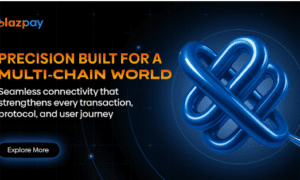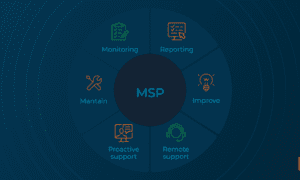Introduction: Why Ripple Matters in Today’s Crypto Market
The cryptocurrency world is full of innovation, but few projects have achieved the real-world impact of Ripple and its token XRP. Ripple stands out as a blockchain-based payment solution focused on transforming international money transfers. While many cryptocurrencies are used mainly for trading or investment, Ripple’s main goal is to connect banks, businesses, and users through faster and cheaper transactions.
In recent years, Ripple has gained significant attention due to its growing use in regions like Latin America. Countries such as Brazil, Mexico, and Argentina are adopting blockchain solutions to overcome inflation, improve remittance systems, and modernize finance. Ripple’s payment technology fits perfectly into this landscape, offering a bridge between traditional banking and the decentralized economy.
The ripple cryptocurrency value depends not only on market trends but also on adoption, partnerships, and regulatory clarity. Investors and businesses are now closely watching how Ripple’s technology will evolve as new financial systems emerge worldwide. Platforms like Trade Vector AI already integrate Ripple-related data and analytics to help users make smarter crypto trading decisions, showing how technology and finance can move together.
This article will help you understand how Ripple works, what gives it value, and why it plays a vital role in shaping the future of finance in Latin America. We’ll also compare it with similar digital assets like casper cryptocurrency and cryptocurrency amp, and explore how Ripple’s cryptocurrency ledger powers its global success.
Let’s dive into the technology and potential behind Ripple and its role in the new digital economy.
What Is Ripple Cryptocurrency and How Does It Work?
Ripple is more than just a digital currency — it is a complete payment network designed to make financial transactions faster, cheaper, and more reliable. The ecosystem consists of three main parts: Ripple Labs (the company behind the technology), the XRP token (used for payments), and the cryptocurrency ledger known as the XRP Ledger.
Unlike Bitcoin or Ethereum, Ripple doesn’t rely on traditional mining. Instead, it uses a consensus protocol among independent validators to confirm transactions. This allows payments to be processed within seconds and at a fraction of a cent. Ripple can handle up to 1,500 transactions per second, making it one of the fastest blockchain solutions in the industry.
Each transaction recorded on the cryptocurrency ledger is transparent and irreversible. Validators — which include banks, exchanges, and financial institutions — work together to maintain trust without needing energy-intensive mining equipment. This makes Ripple a greener and more sustainable alternative to many older cryptocurrencies.
How Ripple Differs from Bitcoin and Ethereum
- Purpose: Ripple focuses on international payments, while Bitcoin is mainly a store of value and Ethereum a platform for smart contracts.
- Transaction Speed: Ripple confirms payments in 3–5 seconds; Bitcoin can take up to 10 minutes.
- Fees: Ripple transactions cost around $0.0002, making it ideal for large-scale money transfers.
- Consensus Mechanism: Ripple uses a network of trusted validators, unlike proof-of-work or proof-of-stake systems.
These advantages explain why Ripple is increasingly used by global banks and fintech companies. Its technology offers a practical solution for cross-border payments, making it especially relevant in regions where traditional banking is slow and costly. In countries like Brazil or Mexico, Ripple’s infrastructure enables instant currency conversion and international remittances, supporting economic inclusion.
Ripple’s success also comes from its open-source architecture. Developers can build additional tools and financial applications on top of the XRP Ledger, integrating it with other blockchain ecosystems such as casper cryptocurrency and cryptocurrency amp. This interoperability opens the door for future innovations, including tokenized assets and decentralized finance (DeFi) applications in Latin America.
In short, Ripple combines speed, scalability, and utility — positioning itself as one of the most useful cryptocurrencies for the modern financial world.
Ripple Cryptocurrency Value: Price Drivers and Market Position
The ripple cryptocurrency value is shaped by a mix of technological strength, institutional trust, and market perception. Unlike speculative coins that depend mainly on hype, Ripple’s price often reflects its real-world utility and partnerships. However, it also responds to external factors like regulation, liquidity, and global crypto sentiment.
Main Factors Influencing Ripple’s Value
- Regulatory clarity: Ripple’s long legal battle with the U.S. SEC has heavily impacted investor confidence. As the case nears resolution, the market is becoming more optimistic about XRP’s future stability.
- Adoption by financial institutions: Ripple’s success largely depends on how many banks and payment companies use its technology. The more real-world usage, the stronger the long-term demand for XRP.
- Cross-border payment volume: Growth in international remittances — especially in Latin America and Asia — directly increases Ripple’s value proposition.
- Market liquidity and exchange listings: Wider availability on major trading platforms keeps Ripple accessible and liquid for both institutional and retail investors.
- Technology integration: Ripple’s compatibility with other blockchains like casper cryptocurrency and cryptocurrency amp can boost its ecosystem and value stability.
Ripple’s Market Standing Compared to Other Cryptocurrencies
Ripple remains one of the top ten cryptocurrencies by market capitalization, consistently competing with other strong projects. Its focus on institutional payments rather than retail transactions sets it apart. XRP’s low cost and scalability make it a logical choice for real-world financial integration.
| Cryptocurrency | Average Transaction Time | Average Fee | Main Use Case |
| Bitcoin (BTC) | 10 minutes | ~$2.00 | Store of Value |
| Ethereum (ETH) | 15 seconds | ~$0.20 | Smart Contracts |
| Ripple (XRP) | 3–5 seconds | ~$0.0002 | Cross-Border Payments |
| Casper (CSPR) | Under 2 seconds | ~$0.0005 | Enterprise Applications |
| AMP | Instant | ~$0.0001 | Collateralization |
As seen above, Ripple’s speed and low transaction cost make it an attractive alternative to traditional systems like SWIFT. Its performance also positions it close to newer, high-efficiency coins such as casper cryptocurrency and cryptocurrency amp, which share similar goals of scalability and reliability.
In simple terms, Ripple’s value comes from being useful — it’s not just another token for speculation, but a real financial tool connecting people and institutions worldwide.
Ripple vs Traditional Finance and Other Cryptos
Ripple stands at the crossroads between the old and new worlds of finance. While traditional systems like SWIFT or bank wire transfers take days to complete and involve high fees, Ripple’s blockchain enables the same process to happen in seconds — and at a fraction of the cost. This difference makes Ripple especially valuable for countries where remittances are a major part of the economy, such as those in Latin America.
How Ripple Improves on Traditional Systems
- Speed: Ripple transactions settle within 3–5 seconds, compared to several days with SWIFT or ACH transfers.
- Low cost: Sending money via Ripple costs a fraction of a cent, making it ideal for both personal and business transfers.
- Transparency: Every transaction is recorded on the cryptocurrency ledger, which ensures accountability and security.
- Global reach: Ripple connects banks and fintech firms around the world through its network, RippleNet, making cross-border transfers seamless.
These advantages mean that Ripple can help millions of people who depend on remittances or international payments — particularly in emerging markets. Instead of paying high exchange fees and waiting days, users can send funds instantly through blockchain technology.
Comparing Ripple with Other Cryptocurrencies
While Bitcoin and Ethereum are often considered benchmarks in the crypto world, Ripple offers a different kind of value. Bitcoin focuses on being digital gold, and Ethereum powers decentralized applications. Ripple, however, targets real-world financial infrastructure. It is not just about decentralization but about making global money movement more efficient.
Ripple’s cryptocurrency ledger also allows interoperability with other blockchains, which is a growing trend. For instance, solutions that integrate with casper cryptocurrency or cryptocurrency amp can expand Ripple’s ecosystem and bridge traditional finance with decentralized networks. This flexibility gives Ripple a unique position — it can coexist with other major cryptocurrencies while enhancing the utility of blockchain technology for financial institutions.
Institutional Adoption and Partnerships
Ripple has established strong relationships with global banks and payment providers. Institutions in countries such as Japan, Brazil, and Mexico are already using RippleNet to improve cross-border transfers. These partnerships give Ripple legitimacy and long-term sustainability — a feature that most cryptocurrencies still struggle to achieve.
In essence, Ripple is not trying to replace banks — it is helping them evolve. By combining blockchain transparency with institutional trust, Ripple creates a bridge between traditional finance and the digital economy.
Ripple’s Growing Role in Latin America: Real-World Use Cases
Latin America has become one of the most dynamic regions for cryptocurrency adoption, and Ripple is playing a key role in that transformation. With rising inflation, high remittance fees, and limited access to global banking systems, many Latin American countries are turning to blockchain solutions for faster and more affordable transactions. Ripple’s technology fits perfectly into this financial evolution.
Why Latin America Needs Ripple
- Remittances: Millions of people across the region depend on money sent by relatives working abroad. Ripple’s network allows instant cross-border payments, reducing the cost of remittances by up to 80% compared to traditional methods.
- Inflation protection: Countries like Argentina and Venezuela face currency instability. Using Ripple or other digital assets helps preserve value and ensures faster access to global liquidity.
- Business payments: Small and medium-sized enterprises (SMEs) in Brazil, Chile, and Mexico use Ripple’s system to settle international invoices instantly.
Ripple’s presence is particularly strong in Brazil. The country has become a testing ground for innovative blockchain projects, including tokenized credit markets built on the cryptocurrency ledger. Local fintech startups are integrating Ripple’s infrastructure into digital banking platforms, allowing seamless transfers between crypto and fiat currencies.
Examples of Ripple Integration in Latin America
In Mexico, financial service providers have adopted RippleNet to manage cross-border flows from the U.S. The solution enables faster settlements and better exchange rates. Similarly, in Argentina, Ripple has been explored for connecting traditional banks with crypto payment providers, improving the efficiency of remittance corridors.
Another notable use case comes from Brazil, where companies use Ripple’s XRP Ledger to tokenize credit assets and manage instant lending operations. This approach combines the stability of traditional finance with the speed and transparency of blockchain technology. It also creates opportunities for new markets — for example, digital loans and tokenized investments denominated in local currencies.
Ripple’s Broader Economic Impact
By supporting fast and low-cost payments, Ripple promotes financial inclusion in areas where traditional banks cannot reach. This is especially significant for rural regions or those affected by unstable local currencies. Ripple’s low transaction fees make it viable even for microtransactions, opening the door for digital wages, microloans, and e-commerce payments that were previously too expensive to process.
While cryptocurrencies like casper cryptocurrency and cryptocurrency amp are also entering the Latin market through DeFi and staking solutions, Ripple remains unique in its institutional partnerships and real-world use cases. It bridges the gap between banks and blockchain, proving that crypto can serve a practical, economic purpose — not just speculative trading.
In Latin America, Ripple is not a theory — it’s a working solution. The region’s rapid adoption of digital payments highlights Ripple’s growing role in shaping the future of inclusive finance.
Technology Behind Ripple: XRP Ledger and Ecosystem Development
At the core of Ripple’s success lies the XRP Ledger — an advanced cryptocurrency ledger that powers the network’s speed, scalability, and transparency. Unlike blockchains that depend on energy-intensive mining, the XRP Ledger uses a consensus mechanism that allows transactions to confirm in seconds, with almost zero energy consumption. This makes Ripple one of the most environmentally friendly crypto systems in the market.
How the XRP Ledger Works
The XRP Ledger is a decentralized database maintained by a network of validators — entities that verify and approve transactions. Instead of competing to solve cryptographic puzzles (as in proof-of-work systems), validators reach agreement through a unique voting process. This method allows Ripple to achieve both speed and reliability while maintaining full transparency.
Each transaction is permanently recorded, ensuring accuracy and security. The ledger can handle over 1,500 transactions per second, making it suitable for financial institutions that require real-time settlements. This is one reason why banks and fintech companies in Latin America and beyond trust Ripple for high-volume payments.
Interoperability and Innovation
Ripple’s cryptocurrency ledger is designed to integrate easily with other blockchain systems. It supports interoperability with projects like casper cryptocurrency and cryptocurrency amp, creating bridges between networks that enable the transfer of assets across ecosystems. This feature positions Ripple as a key player in the move toward a multi-chain financial world.
Additionally, the XRP Ledger includes native functionalities for issuing tokens, managing stablecoins, and creating decentralized applications (dApps). Developers can use its open-source environment to build payment tools, trading platforms, or digital identity solutions. This flexibility encourages innovation, especially in emerging economies where blockchain can address financial accessibility challenges.
Environmental and Technical Advantages
- Energy Efficiency: The XRP Ledger consumes far less energy than proof-of-work blockchains, making it eco-friendly and cost-effective.
- Speed and Scalability: With rapid confirmation times and minimal fees, Ripple is ideal for enterprise-level payment systems.
- Security: All transactions are encrypted and verifiable, ensuring trust without central control.
- Stability: The consistent performance of the ledger supports financial products like tokenized credits, stablecoins, and DeFi integrations.
The combination of these technical strengths allows Ripple to operate at the intersection of innovation and regulation — delivering real utility for banks while aligning with global sustainability goals. This technology-first approach is what sets Ripple apart from many other crypto assets that still struggle to scale or find practical use cases.
By powering real-world applications and supporting interoperability, the XRP Ledger proves that blockchain can be both efficient and environmentally responsible — a model for the next generation of financial systems.
The Future of Ripple Cryptocurrency: Predictions and Challenges
The ripple cryptocurrency value continues to attract global attention as Ripple positions itself for long-term growth. Analysts believe that Ripple’s future will depend on three main areas: regulatory clarity, institutional adoption, and integration with emerging blockchain technologies. While the company has faced major hurdles, its resilience and focus on real-world use have helped it maintain a strong position in the crypto market.
Predictions for Ripple’s Growth
- Regulatory progress: As global regulators begin to define clearer rules for digital assets, Ripple could benefit from increased legal certainty. A favorable outcome in the U.S. and other markets may lead to greater institutional adoption and liquidity for XRP.
- Institutional adoption: Banks and fintech firms are expected to expand their use of RippleNet and the XRP Ledger to power faster, cheaper international transfers. Latin American institutions in particular are likely to continue integrating Ripple’s technology for remittances and tokenized assets.
- Technological expansion: Ripple’s continued development of interoperable solutions — potentially working alongside casper cryptocurrency and cryptocurrency amp — could make it a foundation for cross-chain finance and stablecoin projects.
Some forecasts suggest that XRP could see renewed momentum if adoption accelerates across banking sectors and DeFi ecosystems. Its combination of low cost, scalability, and environmental sustainability makes it a natural choice for governments and enterprises looking for blockchain-based payment rails.
Challenges Ripple Must Overcome
- Regulatory uncertainty: Despite progress, Ripple’s history with the SEC continues to influence investor sentiment. Broader regulatory differences across countries can slow down adoption.
- Competition: Other blockchain payment solutions and stablecoins, including those backed by large financial institutions, could challenge Ripple’s market share.
- Market volatility: Like all cryptocurrencies, XRP remains exposed to the volatility of the broader crypto market, which can affect both investor confidence and usage rates.
Nevertheless, Ripple’s focus on solving real financial problems sets it apart from purely speculative tokens. Its role in streamlining international finance — particularly in emerging economies — provides a stable foundation for long-term relevance.
If Ripple continues to expand partnerships and improve its technology, its future could see it evolve from a niche payment token into a cornerstone of the global financial infrastructure.
Conclusion: Ripple’s Value and Role in the Latin American Crypto Future
The story of Ripple is a story of transformation — from a digital asset once overshadowed by Bitcoin to a powerful bridge between traditional finance and blockchain innovation. The ripple cryptocurrency value is no longer defined only by speculation; it reflects Ripple’s proven ability to deliver real financial solutions where they are needed most.
In Latin America, Ripple has found fertile ground. The region’s growing demand for faster, cheaper, and more reliable cross-border payments has positioned Ripple as a key player in the modernization of financial systems. From remittances in Mexico to tokenized credit markets in Brazil, the cryptocurrency ledger technology behind Ripple is helping banks and businesses embrace the future of finance.
Ripple’s partnerships with major institutions, combined with its energy-efficient infrastructure, make it both practical and sustainable. The network’s openness to interoperability with systems like casper cryptocurrency and cryptocurrency amp further extends its potential, paving the way for multi-chain collaboration and next-generation digital assets.
Beyond its regional influence, Ripple’s vision represents a larger global shift — one where blockchain doesn’t compete with banks but strengthens them. This approach allows financial inclusion, transparency, and innovation to coexist. As more organizations and governments explore blockchain-based payment rails, Ripple’s role as a reliable connector between digital and traditional money systems will only grow.
In essence, Ripple is not just another cryptocurrency — it’s a gateway to a new financial reality. For Latin America and the world, it offers a glimpse into a future where technology empowers people, speeds up economies, and redefines the meaning of value itself.



































